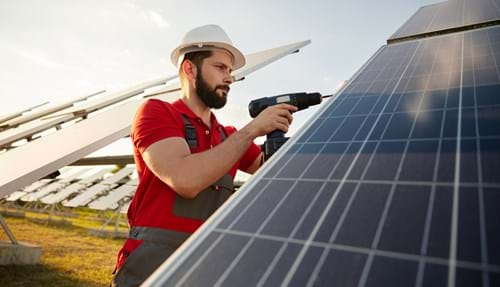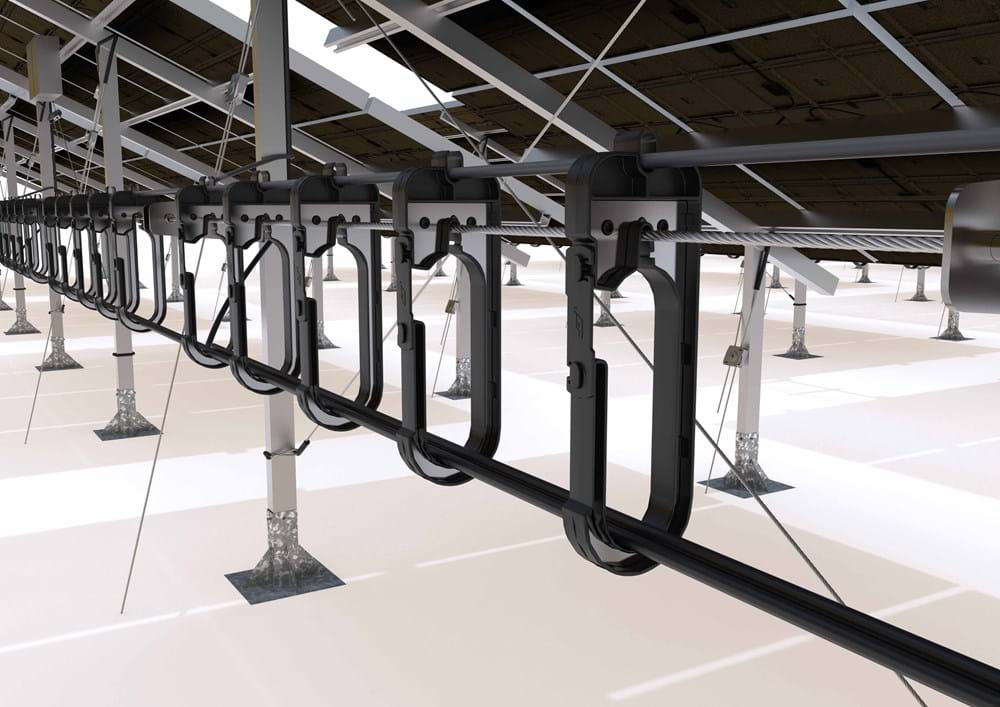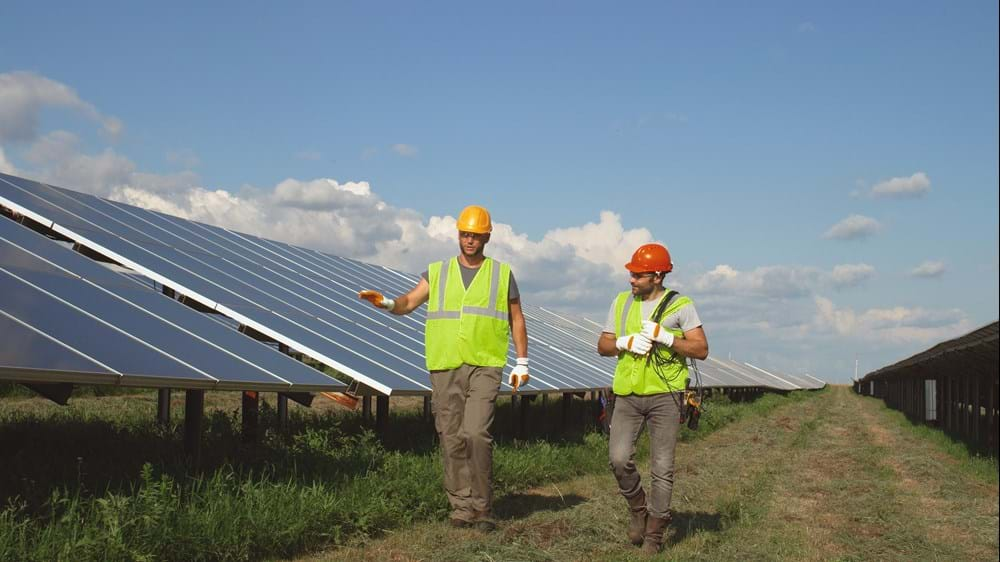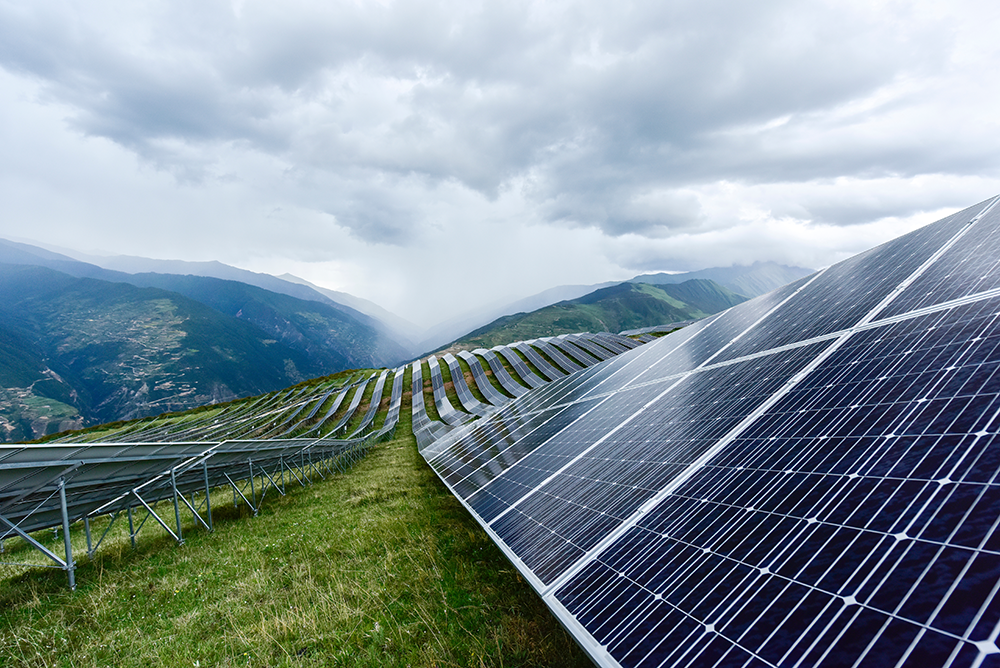5 Reasons Why “Above Ground Cabling” will Revolutionise your Solar Site
Above ground cable management is a new and innovative way of managing solar power and data cables without having to excavate trenches on site.
Quick to install and easy to maintain, EPC’s, developers and contractors are switching onto the fact that suspending cables above ground can revolutionise both the build stage and the O&M phase of solar farms.
Here are 5 reasons why you should be thinking about “Above Ground Cabling” for your next project:
1. Faster and Easier to Install

 Suspending solar cables above ground is a much quicker process than your traditional below ground installation.
Suspending solar cables above ground is a much quicker process than your traditional below ground installation.
With no need for heavy plant to excavate trenches, contractors are free to get on with the cable install as soon as the structure is in place, without worrying about hold ups from unpredictable ground conditions.
Installing Cables above ground allows the installer to work chest height, out in the open, which is much easier and safer than working in a trench. Most above ground systems include a catenary line which can be easily mounted to your existing piles or to slave piles driven to take the load away from the system with a hanger system to carry electrical/data cables.
Simply install and tension the catenary line and brackets using hand tools and you’re ready to drop in your cables. It’s that simple.
2. More Cost Efficient

Choosing above ground cable management will come with a big overall cost saving for many projects.
Because above ground systems are usually much quicker to install, your overall labour costs add up to a whole lot less. Even better, with no need to excavate trenches on site, you can forget about paying for heavy plant machinery, along with the specialist operators to drive it and the low loaders to get it to site.
If all that labour saving still isn’t enough, many projects have also saved on materials. When installing cables below ground, they are often over specified to protect against losses from heat which can’t escape. But, when you move these cables above ground, the free airflow around the cables means there is no need to de-rate cables. resulting in another saving. Win, Win.
3. Greater Control and Predictability

No one likes uncertainty, especially when we’re talking about a multimillion-dollar installation.
By nature, earth is unpredictable. It moves. It floods. It changes. It can even be home to local wildlife which can cause unexpected problems for you and your project.
Moving your cable management out of the earth and above ground comes with a whole range of benefits that will help you sleep better at night.
Routing cables above ground gives you more predictability and control, both during your installation and after. Your project is no longer at risk of delays due to soil conditions or flooding, which will stop your heavy and expensive excavators in their tracks, and with no need to break ground you are no longer rolling the dice with the mounting structure and its foundations.
Once your installation is finished things are much easier to manage too. With your cables suspended above ground the risk from ground disturbance, nesting/interfering wildlife and seismic activity is hugely reduced.
4. Easy Maintenance and Management

One of the main problems with burying your cables in a trench, is that when something goes wrong, they are… “buried in a trench”.
Without visibility over your system, it can be difficult to locate where the issue is, which can mean excavating huge waves of your site unnecessarily. Even if you do know where the fault lies, getting plant machinery to a remote location and accessing the crowded site isn’t easy once your site is commissioned.
When you move your cable management system above ground all this goes out of the window. Your O&M teams can quickly find, locate, and repair any potential issues, which means less downtime and revenue lost.
What’s more, expanding your site or upgrading your cables is easy too, thanks to direct access and visibility.
5. Simpler Logistics

Logistically speaking, moving your cable management system above ground can make life a whole lot easier.
From a transport and handling point of view, you are talking about moving boxes and pallets vs large pieces of steel and heavy plant machinery. This gives you much more transport flexibility and helps reduce your costs and logistical issues. Especially if you are working in remote or limited access areas. Once delivered, above ground cable systems are generally lightweight and easy to carry by hand, making on site material handing a lot simpler.
As demand for land goes up globally, solar sites are increasing being commissioned in remote locations, on challenging terrain and on all types of brownfield sites. These land types make trenching difficult or even impossible in some situations due to access issues, contamination, hard ground, or because it’s a historical site that needs protection. Above ground systems offer a perfect alternative in these scenarios. Not only are above ground kits easier to transport to site, but they can also be installed on any ground type.
Considering moving above ground?
With all that in mind we can’t blame you.
Trenching still has its place and there are benefits to this traditional way of working, but it’s clear that managing solar power and data cables above ground is becoming more and more popular globally.
If you are considering above ground cable routing be sure to check out our innovative plug and play Gripple CR System. Our above ground cable management system has been designed by engineers to be long lasting, quick to install, easy to maintain and simple to transport.
Discover Gripple CR-System Here
Why use Gripple?
- Significant time and cost savings on your project.
- Aesthetic solutions for greener environments.
- A lightweight system which minimises health and safety concerns.
- Innovative, patented solutions designed by an in-house team of engineers.
- Considerable reductions in packaging, vehicle movements and embodied CO2.
- A range of support services at every stage of your project, provided by a dedicated technical team.